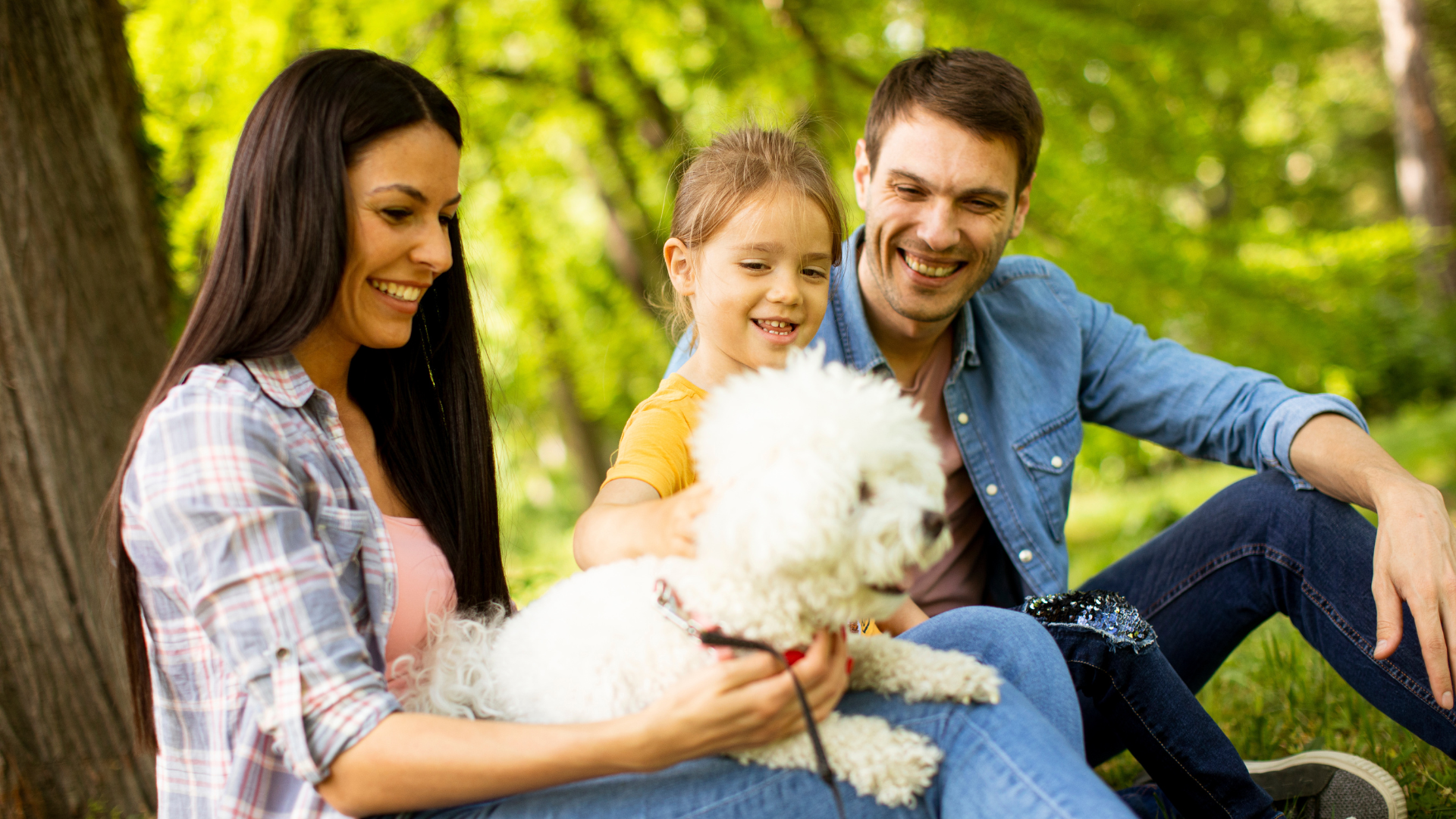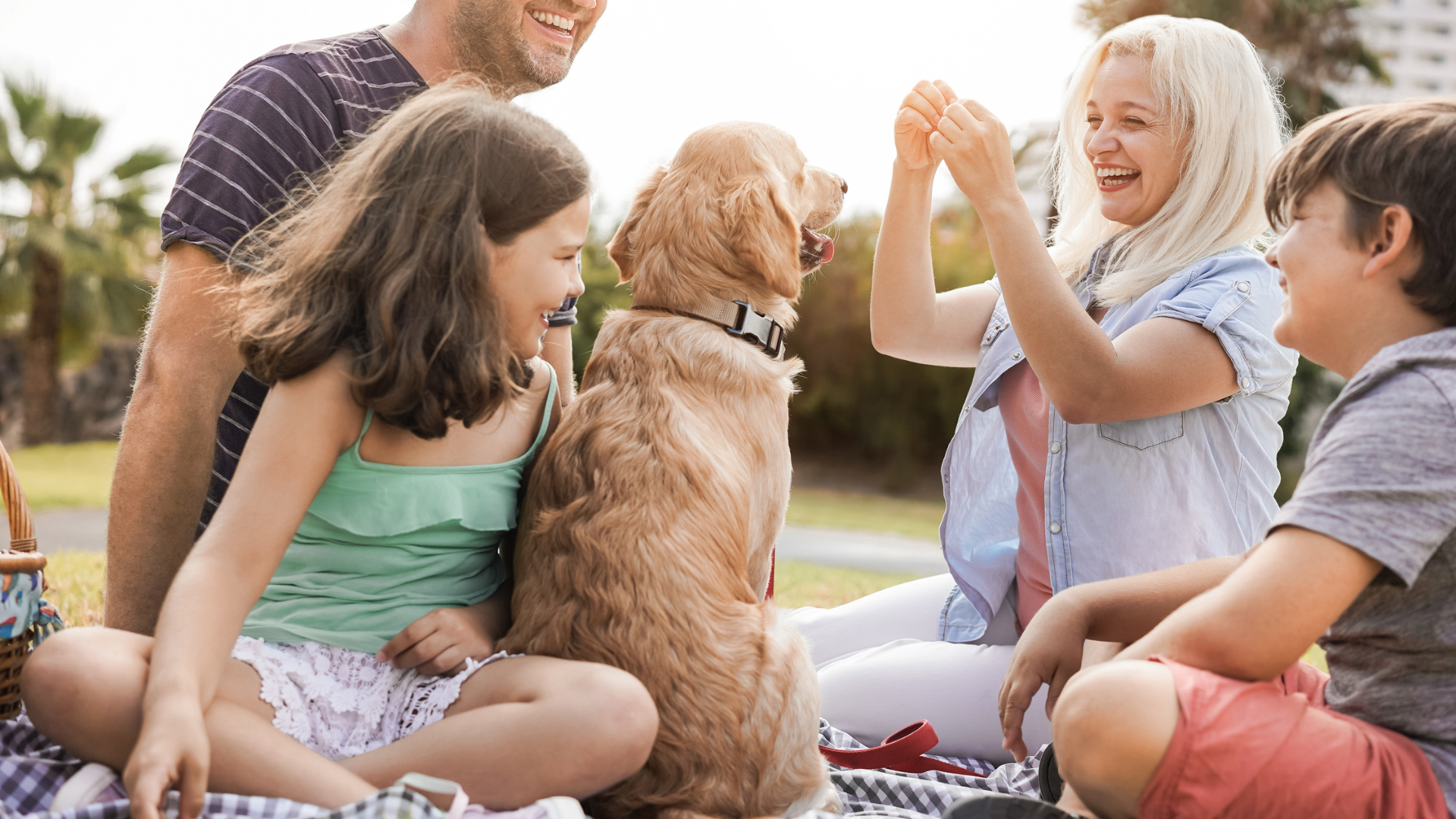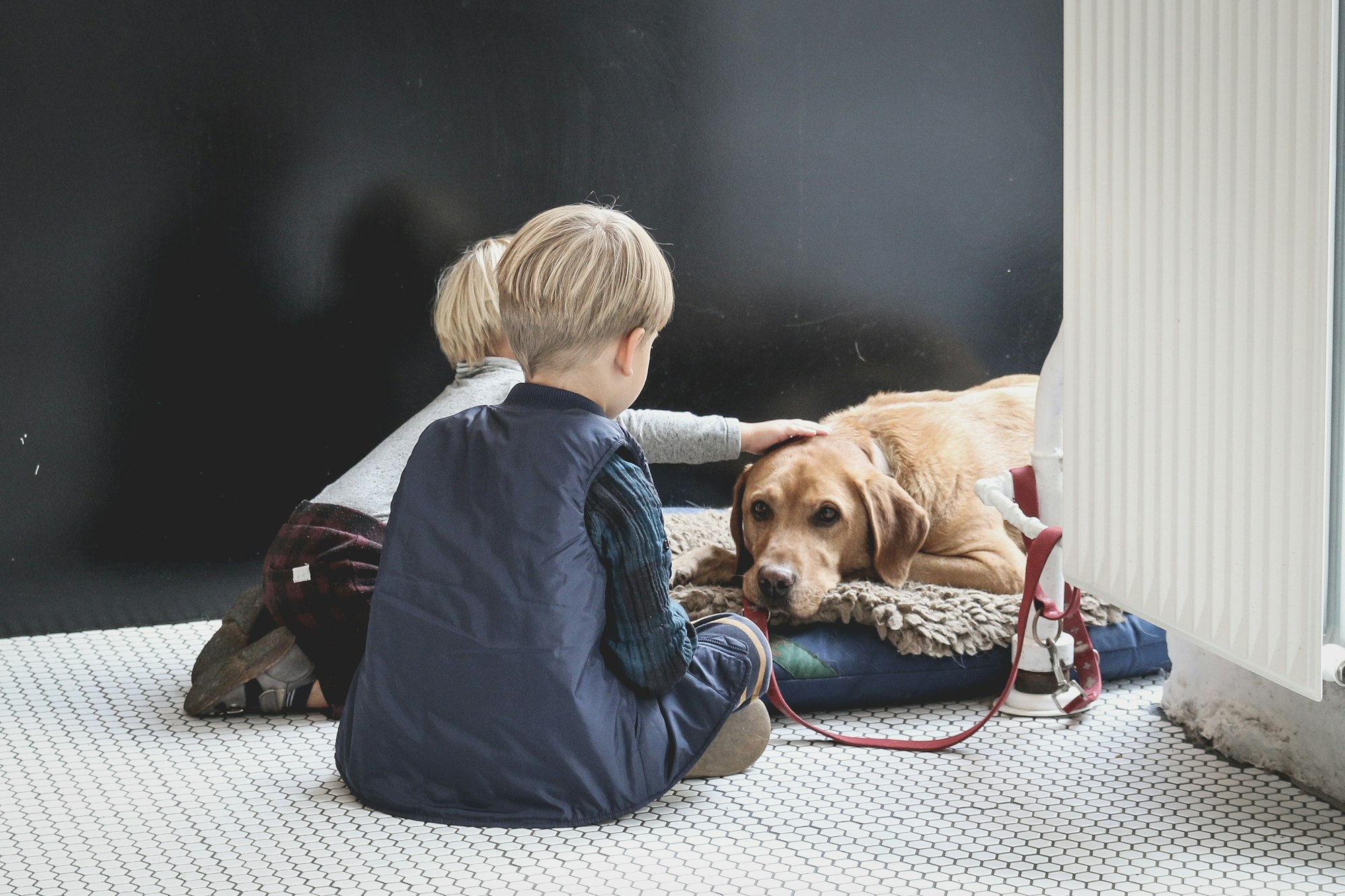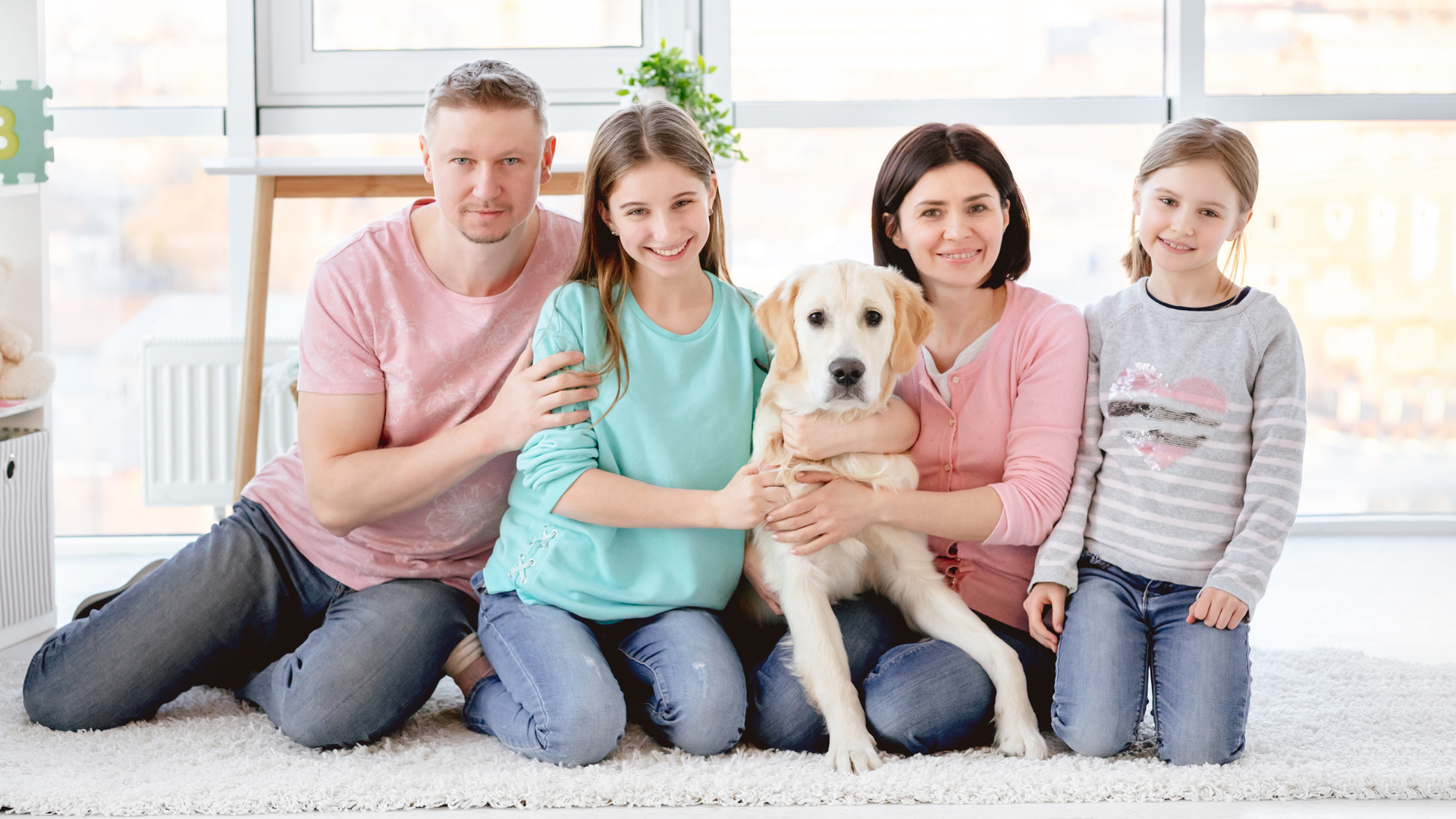Having a family dog can be a wonderful addition to any household, providing companionship, entertainment, and even health benefits. For children, in particular, having a dog can provide valuable lessons and experiences that can shape their development and teach them important life skills.

One of the most obvious benefits of having a family dog is the companionship they provide. Dogs are known for their loyalty and affection, and can quickly become a beloved member of the family. They are always there to offer a wagging tail, a wet nose, or a cuddle when needed, and can provide a sense of comfort and security to both children and adults.
In addition to the emotional benefits, there are also many physical health benefits to having a dog in the family. Studies have shown that children who grow up with dogs are less likely to develop allergies and asthma, and are more likely to have stronger immune systems. Dogs also require regular exercise, which can encourage children to be more active and help them develop healthy habits that can last a lifetime.

Building Responsibility
Having a family dog can be a great way to teach children responsibility. Kids can learn how to take care of a pet and develop a sense of accountability. Here are some ways a family dog can help build responsibility:
Daily Care Tasks
One of the most important responsibilities of owning a dog is taking care of their daily needs. Children can learn how to feed the dog, give them water, and take them for walks. These tasks can help teach kids about the importance of routine and consistency. Creating a schedule for dog care can also help children develop time management skills.
Understanding Commitment
Owning a dog is a long-term commitment. Children can learn about the importance of making a commitment and following through on it. They can also learn about the consequences of not meeting their responsibilities. For example, if they forget to feed the dog, the dog may become sick or unhappy. This can help children understand the importance of being reliable and dependable.
Overall, having a family dog can be a great way to teach children about responsibility. By taking care of a pet, children can learn about the importance of routine, consistency, and commitment.
Enhancing Social Skills

Interacting with Others
Having a family dog can help children enhance their social skills by providing a common interest and topic of conversation with others. Children who have a dog are often more likely to engage in conversations with other children and adults who also have dogs. This can help them develop their communication skills and build relationships with others.
In addition, having a dog can also help children learn how to interact with others in a positive way. They can practice being gentle and kind to their dog, which can translate to how they treat other people. This can help them develop important social skills such as empathy, respect, and kindness.
Developing Empathy
Caring for a dog can also help children develop empathy. They learn to recognize and respond to their dog's needs, which can help them understand the needs of others. For example, if a child sees that their dog is thirsty, they may be more likely to offer water to a friend who is thirsty as well.
Through caring for their dog, children can also learn to be responsible and considerate of others. They may need to take their dog for walks, feed them, and clean up after them. This can help them develop a sense of responsibility and empathy for others.
Overall, having a family dog can provide valuable lessons for children in enhancing their social skills and developing empathy.
Promoting Physical Activity

Outdoor Playtime
Having a family dog can encourage kids to spend more time outside playing. Running around with their furry friend can be a great way to burn off energy and get some exercise. Dogs love to play fetch, and kids can get in on the fun too. This can be a great way to promote physical activity while also bonding with the family pet.
Regular Walks
Walking the family dog can be a great way to promote physical activity for both kids and adults. Taking the dog for a walk can be a fun family activity that also provides exercise. It's important to establish a regular walking routine to keep the dog healthy and happy. Walking the dog can also be a good opportunity to explore the neighborhood and get some fresh air.
Overall, having a family dog can be a great way to promote physical activity and encourage kids to spend more time outside playing. Whether it's playing fetch or going for a walk, spending time with the family pet can be a fun and healthy way to stay active.
Supporting Emotional Development
Providing Comfort
Dogs are known for their ability to provide comfort and emotional support to their owners. This is especially true for children who may be experiencing stress, anxiety, or other emotional challenges. Research has shown that interacting with a dog can lower levels of cortisol, a hormone associated with stress, and increase levels of oxytocin, a hormone associated with bonding and relaxation.
Having a family dog can be particularly beneficial for children who may struggle with social interaction or have difficulty expressing their emotions. Dogs are non-judgmental and offer unconditional love and support, which can help children feel more comfortable and confident in their interactions with others.
Coping with Loss
The loss of a loved one can be a difficult and emotional experience for anyone, including children. Having a family dog can help children cope with the loss of a loved one by offering comfort and support during a difficult time. Dogs are intuitive and can sense when their owners are upset or in distress. They often provide comfort by cuddling, licking, or simply being present with their owners.
In addition, caring for a pet can provide children with a sense of responsibility and purpose, which can be especially important during times of grief. By taking care of their dog, children can feel a sense of accomplishment and pride, which can help them cope with their emotions and feel more in control during a difficult time.
Teaching Safety and Boundaries

Respecting Space
One of the most important lessons that kids can learn from having a family dog is respecting space. Dogs, like people, need their own space and boundaries. It's important for kids to understand that just because a dog is friendly and playful, it doesn't mean that they can invade their personal space.
Parents can teach their kids to respect a dog's space by setting boundaries. For example, if a dog is sleeping or eating, kids should be taught to leave them alone. They should also be taught to approach dogs in a calm and gentle manner, and to avoid sudden movements or loud noises that could startle them.
Handling Animals Properly
Another important lesson for kids is how to handle animals properly. Parents should teach their kids how to pet a dog gently and avoid pulling their fur or tail. They should also teach them how to hold a dog securely, supporting their weight and avoiding putting pressure on their legs or back.
Parents should also teach their kids how to read a dog's body language. For example, if a dog is growling or barking, it's a sign that they are feeling threatened or uncomfortable. Kids should be taught to back away slowly and avoid approaching the dog until they are calm again.
By teaching kids how to respect a dog's space and handle them properly, parents can help to ensure that their family dog is a safe and enjoyable addition to their family.
Fostering Family Bonding
Having a family dog can bring families closer together by fostering a sense of teamwork and shared responsibility. Children can learn valuable lessons about the importance of working together and being responsible for another living being.
Shared Responsibilities
When a family decides to bring a dog into their home, everyone must work together to ensure that the dog is well taken care of. This means feeding, walking, and grooming the dog regularly. By sharing these responsibilities, children learn the importance of working together and being responsible for another living being.
Creating Memories
Having a family dog also provides opportunities for creating lasting memories. Going for walks, playing fetch, and snuggling with the dog can all be fun activities that the whole family can enjoy together. These shared experiences can help strengthen the bond between family members and create memories that will last a lifetime.
In conclusion, having a family dog can bring many benefits to a family, including fostering a sense of teamwork and shared responsibility, and creating lasting memories.

Supporting Cognitive Development
Interacting with dogs can have a positive impact on a child's cognitive development. Here's how:
- Problem-solving Skills: Engaging in activities like teaching tricks or playing interactive games with a dog can enhance a child's problem-solving abilities. This encourages them to think critically and strategize.
- Learning Responsibility: Taking care of a dog involves remembering feeding schedules, grooming routines, and health needs. This responsibility helps children develop memory skills and organizational abilities.
- Understanding Cause and Effect: Interacting with dogs allows children to observe cause-and-effect relationships. For instance, they learn that certain behaviors (like offering a treat) lead to specific responses from the dog.
- Enhancing Memory: Dogs often respond positively to routines and consistent commands. This repetition can improve a child's memory as they recall commands and behavioral expectations.
- Stimulating Curiosity: Dogs are naturally curious animals, and their behavior can spark a child's curiosity about animal biology, emotions, and communication.
- Improving Focus and Attention: Training sessions or structured playtime with a dog require focus and attention. This can help children develop concentration skills and improve their ability to stay engaged in tasks.
- Boosting Language Development: Interacting with a dog involves verbal communication through commands and cues. This can enhance a child's language skills and vocabulary as they learn to communicate effectively with the dog.
- Promoting Empathy and Emotional Understanding: Understanding a dog's needs and emotions can deepen a child's empathy and emotional intelligence. This awareness extends to understanding non-verbal cues and body language.
In summary, the cognitive benefits of interacting with a family dog contribute to a child's overall development, fostering skills like problem-solving, memory, focus, and emotional understanding.
Conclusion
Having a family dog can offer numerous benefits for children, including teaching them responsibility, empathy, and social skills. Dogs can also provide companionship and comfort, which can be especially beneficial for children who may be struggling with anxiety or other emotional issues.
In addition to the emotional benefits, having a family dog can also provide physical benefits for children. Playing with a dog can help children stay active and engaged, which can contribute to their overall health and well-being. Dogs can also help children develop a sense of routine and structure, which can be helpful for children who struggle with organization or time management.
Overall, the benefits of having a family dog are numerous and can have a positive impact on children's development and well-being. However, it is important for families to carefully consider their lifestyle and resources before adopting a dog, as dogs require a significant amount of time, attention, and care. With proper planning and preparation, however, a family dog can be a wonderful addition to any household.

FAQs (Frequently Asked Questions)
- Are certain dog breeds better suited for families with kids?
- Some breeds are known for their gentle nature and compatibility with children, such as Labrador Retrievers, Golden Retrievers, and Beagles.
- How can children be involved in the care of a family dog?
- Children can participate in feeding, grooming, training, and playing with the dog under adult supervision.
- What age is appropriate for a child to start learning pet care responsibilities?
- Children as young as preschool age can begin with simple tasks like filling water bowls or helping with gentle brushing.
- How can a family prepare for the arrival of a new dog?
- Families should research breeds, pet-proof their home, establish ground rules, and ensure everyone understands the responsibilities involved.
- What if a family member is allergic to dogs?
- Families with allergies can consider hypoallergenic breeds or consult with an allergist before bringing a dog home.




